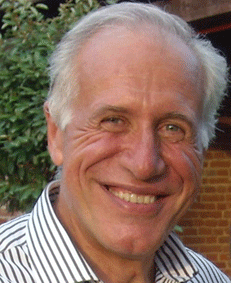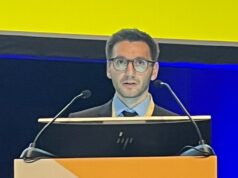
By Fiorenzo Gaita
The last 10 years have seen an amazing evolution in catheter ablation of atrial fibrillation (AF). It has gone from being an experimental technique to the most common ablation procedure performed worldwide.
A great effort has been made to establish the role of every specific ablation strategy in different types of AF. Currently, there is wide consensus that the best strategy in paroxysmal AF is pulmonary vein isolation (PVI) while for persistent and long-standing persistent AF, a more aggressive approach including left atrium linear lesions and/or CFAEs ablation is necessary. Hand in hand with the growth of AF ablation, the industry has progressively provided new ablation tools and imaging techniques with the aim of facilitating AF ablation, improving success and reducing complications.
The main imaging techniques that have been used over time included first fluoroscopy, followed by intracardiac echocardiography (ICE) and virtual 3D electro-anatomic mapping, with or without magnetic resonance/computed tomography (MRI/CT) imaging integration.
Considering the growing number of procedures performed, the increasing number of patients affected by AF suitable for ablation and the considerable costs of these new technologies, it is fundamental to know the real impact of these tools in terms of outcomes.
Fluoroscopy in AF ablation was the first imaging technique applied in clinical practice. Studies of pulmonary vein isolation and fluoroscopy reported a mean short-term (≤1 year) success of 70% (range 65–80%), mean complication rate of 4% (range 1–6%), mean procedural time of 188 minutes (range 150–250) and mean fluoroscopy time of 61 minutes (range 45–85). The main advantages are the availability in every electrophysiology lab, simultaneous visualisation of all catheters and real time acquisition. The disadvantages are mainly represented by 2D imaging, which may be challenging for inexperienced operators, and the long X-ray exposure required to visualise the movement of the catheters.
ICE was also a technique quickly applied to AF catheter procedures, due to its potential to easily solve the main “bugbear” of AF ablation: transseptal puncture. Studies of pulmonary vein isolation performed with fluoroscopy guidance and ICE reported mean success rate of 72% (range 55–85%), complication rate of 4% (range 1–6%), procedural time of 210 minutes (range160–280) and fluoroscopy time of 66 minutes (range 50–90). Main advantages of ICE are the detailed real-time imaging acquisition (with the consequent good visualisation of interatrial septum and left atrium-pulmonary vein junction) and the possibility to continuously monitor thrombus formation. Disadvantages are extra venous sheath and catheter insertion, visualisation of ultrasonographic-centred catheter only, higher costs and no X-ray exposure reduction and success improvement. Virtual 3D electro-anatomic mapping, including Carto (Biosense Webster) and NavX (St Jude Medical), with or without magnetic MRI/CT imaging integration, helped AF ablation to reach popularity and diffusion. In fact, performing AF ablation is technically challenging because lesions are based on a point-by-point approach that needs great precision; and the three-dimensional structure of left atrium is very complex and difficult to visualise with fluoroscopic guidance alone. Non-fluoroscopic mapping techniques were introduced to allow a 3D reconstruction of the left atrium with real-time visualisation of all catheters in order to achieve better success rate, reduced incidence of side effects and X-ray exposure. Studies with pulmonary vein isolation with this approach reported a mean success rate of 75% (range 70–85%), complication rate of 2% (range 0.5–2.5%), procedural time of 175 minutes (range 100–250) and fluoroscopy time of 36 minutes (range 20–50).
Main advantages are real and detailed anatomy visualisation, precise catheter movement visualisation and lower X-ray exposure. Disadvantages are the time required for chamber reconstruction (for unskilled operators) and increased costs: also for this technique, no increased success has been reported, while, as expected, reduce fluoroscopic time has been achieved.
Taking all together, these results suggest that new imaging technologies lead to a progressive reduction of fluoroscopy time, without affecting success and complication rates. If the only proven advantage is fluoroscopy time reduction, is this enough to justify the use of these tools? Considering that the estimated lifetime additional risk of cancer for patients undergoing a 60-minute X-ray exposure AF ablation procedure is ∼1 over 650, that the lifetime attributable cancer risk following a 15-year professional radiological exposure is ∼1 over 200 exposed subjects, it is the responsibility of all physicians to minimise hazard to patients, professional staff and themselves. Without any doubt, our answer can only be: “Yes, it is”.
Fiorenzo Gaita, director, Division of Cardiology, Department of Internal Medicine, Università degli Studi di Torino, Turin, Italy









